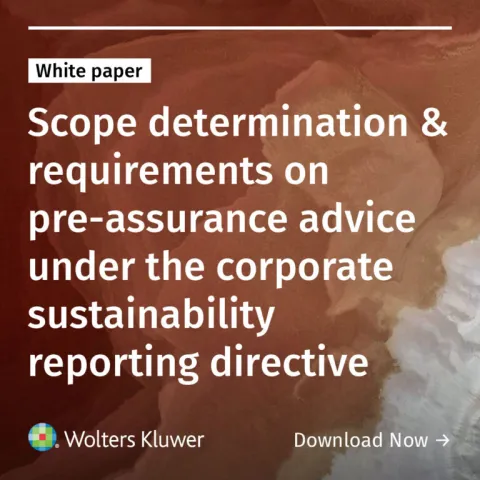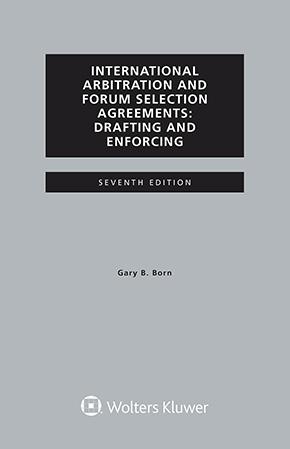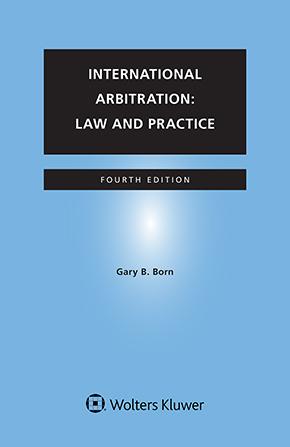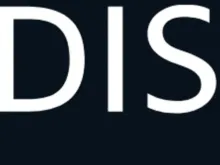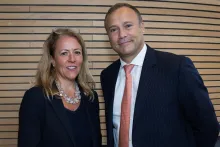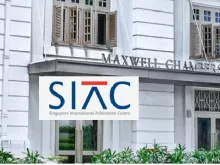The School of International Arbitration’s 40th Anniversary Conference: Celebrating Four Decades of Arbitration, Education, and Innovation
October 20, 2025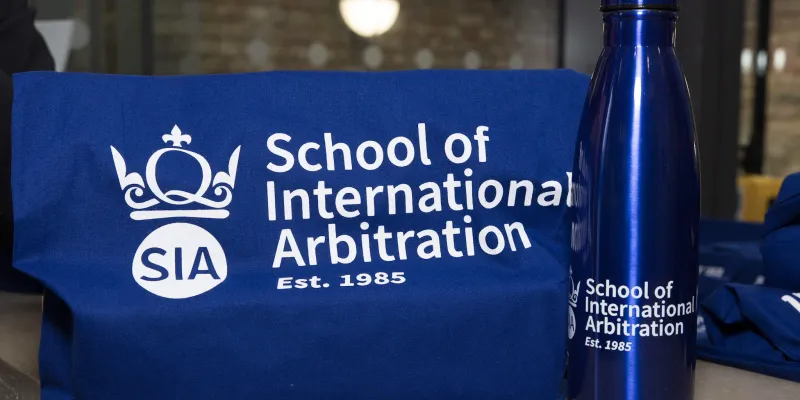
In an era where international arbitration faces unprecedented challenges from artificial intelligence (“AI”) to legitimacy questions, the School of International Arbitration’s (“SIA”) 40th anniversary conference offered an occasion for timely reflections on the field’s past, present, and future. Despite a London tube strike and torrential September rain, a full house with participants from across the globe for this special occasion gathered on 10 and 11 September 2025 at Queen Mary University of London (“QMUL”). The two-day conference “Arbitration in Context” explored how arbitration has evolved from a niche legal practice into a sophisticated global ecosystem, while examining the forces reshaping its future. This report captures the key insights from six comprehensive panels examining arbitration’s multifaceted transformation.
SIA Legacy and Foundations
The SIA was established in 1985 by Prof. Julian Lew KC, when Sir Roy Goode was the Head of the Centre for Commercial Legal Studies (“CCLS”). At the time, SIA was the world’s first academic institute dedicated to teaching international arbitration as a distinct field. In its four decades, it has been a pioneer that has influenced the world’s understanding of international arbitration. The SIA has also been a blueprint that would redefine arbitration as an academic discipline.
Lew’s vision emerged from a fundamental question: what should the subject matter of such a specialized course be? The answer developed through pilot programmes in summer schools before the SIA’s formal establishment within CCLS.
The conference opened with Dr. Dominique Hascher’s keynote speech examining the evolving albeit pervasive relationship between courts and arbitral tribunals. His discussion of AI was cautionary, emphasizing the risks AI poses and the potential erosion of the nuanced decision-making that defines quality arbitration.
The roundtable of arbitration luminaries, Alan Redfern KC, Prof. Bernard Hanotiau, Hilary Heilbron KC, Prof. Lew, and Teresa Giovannini, reflected on arbitration’s four-decade transformation. Hanotiau offered a particularly telling observation: when asked whether studying international private law – the traditional path for earlier generations – remained necessary, he indicated it was no longer required, as arbitration, now a comprehensive field, was sufficient in itself.
Giovannini emphasized arbitration’s inherent strength in its procedural flexibility, particularly when tailored through discussions with the parties involved. Meanwhile, Heilbron provided a fascinating historical perspective on technology’s impact. She noted how arbitration has grown from a world without computers or emails to one where technology now assists significantly with document management and email chains. However, she also acknowledged technology’s drawbacks, citing the Redfern Schedule as an example of how certain procedural tools have become unmanageable in the digital age.
The roundtable also illuminated progress in diversity. Heilbron and Giovannini emphasized how the gender gap has narrowed dramatically over four decades, with the advancement of minorities and women in the field.
The SIA’s extraordinary reach embodies these transformations: over 4,000 graduates from 120 countries, with more than 60 doctoral completions. This alumni network includes advocates, arbitrators, academics, and leaders of major arbitration institutions worldwide. The Gala dinner at Lincoln’s Inn’s historic Old Hall, near the SIA’s home at Lincoln’s Inn Fields, provided a fitting venue for this community to celebrate an institution that did not just create a discipline, but cultivated its foundations for future generations.
The gala dinner had one more surprise: Sir Robin Knowles as the after-dinner speaker. With Nigeria v. P&ID being one of most widely discussed developments in the recent years (see for previous coverage on the Blog here), guests were in for a treat. Sir Knowles highlighted the SIA’s pivotal role in shaping arbitration practice and scholarship over four decades, emphasizing the institution’s contribution to maintaining the highest standards in international dispute resolution. Professor Rodrigo Olivares-Caminal, as Deputy Head of CCLS, also offered remarks celebrating the SIA’s sustained excellence and global influence, highlighting the school’s remarkable success in educating generations of arbitration practitioners and its continuing impact on the evolution of the field worldwide.
The Contemporary Arbitration Landscape
During three of the conference’s most thought-provoking panels, Arbitration and Economy, Arbitration and Sociology and Arbitration and Regulation, participants could understand that international arbitration is a dynamic market, with a complex cultural ecosystem, within a contested regulatory battleground.
Economic Dimensions
The panel on Arbitration and Economy, moderated by Norah Gallagher, explored efficiency challenges. Sylvia Tonova warned that arbitration’s foundational advantages -efficiency, flexibility and enforceability - risk erosion as cases grow slower and more expensive. In regard to investment arbitration, she noted that there are still some politicisation and misunderstandings surrounding these proceedings.
Guled Yusuf linked similar concerns to law and economics theory, noting how adversarial counsel tactics and inconsistent case management undermine arbitration’s efficiency, in line with the 2025 QMUL–White & Case Survey results.
Nania Owusu-Ankomah Sackey emphasized arbitration’s broader economic role, particularly in Africa. She underlined its role in investor confidence, depoliticising transactions, and sustaining national economies. She further noted arbitration’s substantial contribution to both the legal sector and related industries, citing estimates of GBP 2.5 billion in annual revenue generated by London’s arbitration market and SGD 1.4 billion by Singapore.
Dr. Laurence Shore closed the panel with a geopolitical perspective. He observed that seats like Riyadh thrive through strong state support, with investments in infrastructures and pro-arbitration regulations, while others lag due to insufficient political commitment and investments.
Sociological Perspectives
The Arbitration and Sociology panel, moderated by Dr. Remy Gerbay examined cultural dimensions. Dr. Mary Mitsi offered an introduction to the topic. Dr. Moshe Hirsch described international arbitration as a “cosmopolitan elite” with distinct rituals and hierarchies, and norms, though investment and public law lawyers often clash over values. Dr. Mikael Schinazi traced sociological evolution from its origins with judicial elites to modern algorithmic legitimacy. He described its journey from “Arbitration 1.0”, the elite model of the 20th century, to “Arbitration 2.0”, characterized by boutique firms and global expansion, and finally to “Arbitration 3.0” where algorithmic systems increasingly influence its legitimacy.
Turning to the African perspective, Saadia Bhatty highlighted how this shift is also reflected in the evolving role of the African states which, after being early ratifiers of the New York and Washington Conventions, are now asserting themselves as rule-makers, rather than rule-takers.
Dr. Mohamed Mahayni also noted that international arbitration is complex and operates through unwritten rules and shared practices, with concepts like “pro-arbitration” embodying evolving values.
Regulatory Evolution
The Arbitration and Regulation session, moderated by Dr. Maria Fanou, addressed governance challenges. Prof. Andrea Bjorklund examined how bilateral investment treaties impose obligations on states but not investors, with investors preferring enforceable national law over treaty provisions when it comes to human rights or environmental duties.
Prof. Stefan Kröll mapped the “hardening” of soft law instruments. Recalling the writing process of Comparative International Commercial Arbitration (Wolters Kluwer, 2003), co-authored with Prof. Julian Lew and Prof. Loukas Mistelis, he noted that what is often referred to as “soft law” was originally perceived as the international arbitration practice. Over time, the development of instruments such as the IBA Rules and Guidelines or the UNCITRAL Notes, though still formally voluntary, have been increasingly adopted by institutions, parties and tribunals, blurring traditional boundaries between guidance and binding rules. Nevertheless, he concluded, they lack true normativity and operate only by party agreement.
Audley Sheppard KC argued that while harmonization fosters predictability, it also narrows party autonomy, which is the arbitration’s foundation. Matthew Weiniger KC noted that while institutional arbitration remains dominant, ad hoc procedures remain relevant, especially where sanctions complicate institutional involvement. It was also noted that some of the biggest ‘dockets’ are in shipping and commodities disputes which are resolved in ad hoc proceedings.
Based on these presentations, it became clear to the audience that these challenges make educational innovation more critical than ever.
Shaping Tomorrow’s Arbitrators
The conference’s philosophical explorations provided essential context for educational innovation. As Prof. Mistelis observed, arbitration’s evolution from its trade law origins requires continuous intellectual renewal: arbitration is a formal justice system and as such inspirations are drawn from moral philosophy and Aristotelian approaches to restorative justice.
Prof. Thomas Schultz, focusing on the rationale of arbitration as justice, challenged the assembly with pointed questions about whether excessive focus on procedure risks diminishing arbitration’s societal relevance.
Eduardo Silva Romero examined arbitration ethics by focusing on arbitrator disclosures and counsel ethics; he particularly emphasised how these topics have been centre-stage in the last two decades.
Prof. Kun Fan presented cultural perspectives on how legal mind, moral heart, and religious soul shape arbitration practice, illuminating the deep intellectual currents that must inform educational approaches. How each person looks at a painting and what messages one draws would often be a matter of culture; similarly listening to witness testimony or reading submissions may have different impacts depending on culture. She also pointed out that cultural perspectives may interact with regional perspectives while maintaining their distinct features.
James Castello’s focus on fairness in arbitral outcomes provided the conceptual bridge linking philosophical inquiry to practical education. The discussion focused on the very fact that philosophical underpinnings of international arbitration contribute to the legitimacy of arbitration and guide discussions on regulation and the interaction of arbitration and the courts.
The Arbitration as Academia panel, moderated by Prof. Debbie De Girolamo, exemplified how the SIA has fundamentally shaped arbitration education by recognizing that teaching and research as inseparable forces that legitimize and advance the arbitration ecosystem. Dr. Crina Baltag emphasized that effective arbitration education is more than just knowledge transfer; it cultivates a distinct professional mindset that balances analytical rigor with adaptive flexibility. This mindset shift recognizes that modern arbitration practitioners must navigate constantly evolving international commercial contexts, which require intellectual agility rather than mechanical rule application. When students learn to question assumptions and embrace accountability, they become practitioners who strengthen arbitration’s credibility rather than merely perpetuating established practices. This approach ensures that tomorrow’s arbitrators will continuously evaluate and refine the system rather than accepting it uncritically.
Patricia Shaughnessy’s insights into experiential learning showed why SIA’s approach has proven so enduring. Drawing inspiration from the pedagogical model pioneered at SIA, which combined rigorous academic study with practical training, she founded the Master of International Commercial Arbitration Law programme in 2003 for Stockholm University. Through her work with the VIS Moot, where she serves as President, she has extended this combination of academic rigor and practical competition to transform legal education by placing students directly into counsel roles. This hands-on methodology ensures that arbitration is understood as a legal process, not just legal combat, creating practitioners who appreciate nuance and procedure over adversarial posturing.
Dominic Spenser Underhill’s provocative example – showing that 50% of students consider lying ethical in negotiations – illustrated the complex ethical dimensions of arbitration education. His experience teaching ethics in arbitration at the SIA revealed how cultural diversity, while enriching classroom discourse, creates interpretive challenges that require sophisticated teaching methods rooted in deontological frameworks.
Mike McClure KC’s practitioner perspective highlighted arbitration’s unique professional characteristics, with its niche nature fostering close knit networks that blur traditional boundaries between academia and practice. This integration of theory and practice, philosophy and pedagogy, positions the SIA to continue shaping arbitration’s intellectual evolution.
Yet any discussion about the future of arbitration would be incomplete without addressing technology’s transformative potential.
The Digital Frontier
The technology panel, moderated by Prof. Maxi Scherer, brought together Ana Vermal, Clement Fouchard, Greg Falkof, and Hugh Carlson, to explore arbitration’s technological transformation, a discussion that revealed both the promise and complexity of AI integration in international dispute resolution.
Carlson, who also has a background as a former software engineer, shared practical insights into AI’s current capabilities in arbitration. Carlson explained how “deep research” functions can provide detailed analysis with lower hallucination rates, while connector tools, such as those linking with Microsoft systems, enable automated drafting and email management. However, drawing on his technology expertise, Carlson identified a fundamental challenge: arbitration’s limited accessible data makes it difficult for algorithms to navigate the field effectively, unlike more data-rich legal domains.
Building on Carlson’s insights, the panel explored AI tools already reshaping practice, with Fouchard emphasizing the importance of disclosure when using AI systems. Falkof described systems that not only load documents but provide live assistance, including support during cross-examination, a development that signals AI’s move from background research to real-time advocacy support.
Scherer contributed crucial empirical insights, referencing studies that examine how AI affects analytical skills. She described research where participants were divided into two groups: one started with AI models from the beginning, while the other introduced AI later. The findings were striking. Those who started by thinking independently before using AI achieved better results than those who relied on AI from the start. This suggests that the sequence matters: developing analysis first, then enhancing it with AI, produces superior outcomes.
Vermal reinforced this human-first approach, asserting that AI cannot exercise judgment or draw from experience, capabilities where human intellect and emotions remain superior. Yet, Falkof challenged the room with a market reality: “Commercial people are using it, they are our clients; will they accept that we do not use it as much as they do?” He characterized AI’s impact on arbitration potentially as disruptive as on any other field.
Regulation emerged as the most complex challenge. Falkof articulated the core dilemmas, which include the undefined scope, confidentiality of data, opaque decision-making processes, and fundamental transparency questions. Further, there is a question of whether parties should know if arbitrators use AI and for what purposes. He noted the tension between party consent and tribunal discretion, concluding that while regulation is necessary to protect arbitration’s integrity, the details remain unclear. This regulatory uncertainty compounds his earlier market concerns, creating a dual pressure where practitioners must adopt AI to remain competitive while navigating undefined ethical and procedural boundaries.
Vermal closed with practical challenges for guideline development: how to create frameworks that will not become obsolete yet remain adaptable. She noted that the International Bar Association has 30 professionals currently working on such guidelines, highlighting that as the SIA enters its fifth decade, balancing technological transformation with the preservation of human judgment remains one of arbitration’s most pressing challenges.
Conclusion
The SIA’s 40th anniversary conference comprehensively addressed arbitration’s evolution across economic, sociological, regulatory, educational, and technological dimensions. From examining market forces and cultural transformations to exploring philosophical foundations and AI integration, the panels revealed arbitration at a fascinating inflection point. The discussions illuminated both the challenges facing modern practice (rising costs, cultural tensions, regulatory complexities) and the innovative solutions emerging through educational reform and technological advancement.
Yet, perhaps most striking was how the SIA’s founding principles – intellectual rigor, practical relevance, and a global perspective – remain as vital today as four decades ago. The SIA’s first forty years have transformed arbitration from legal subspecialty to global discipline. Arbitration, despite pressures from multiple directions, continues to evolve through the collective efforts of its global community.
You may also like





